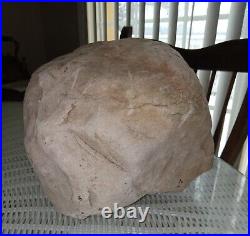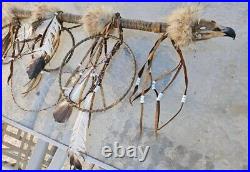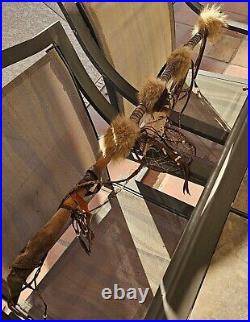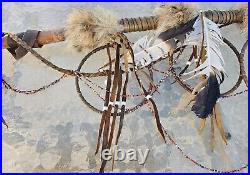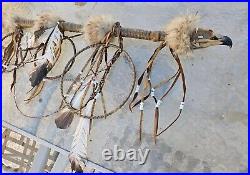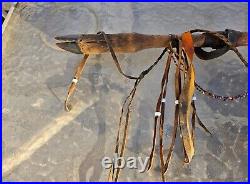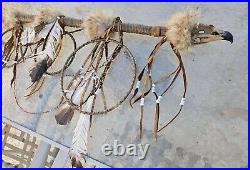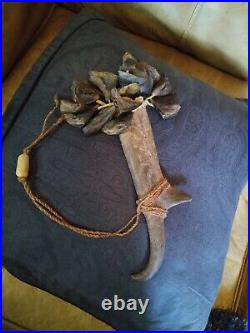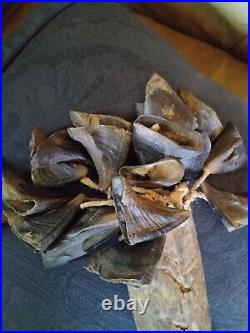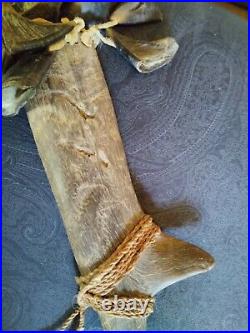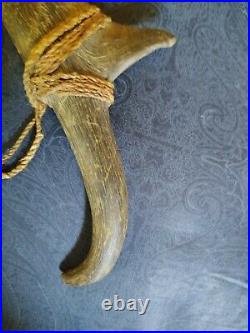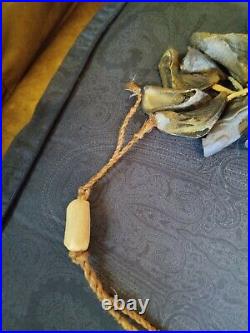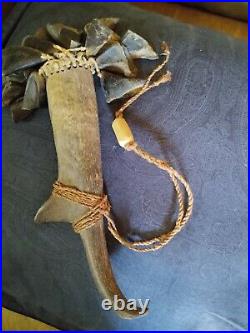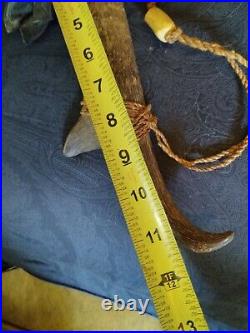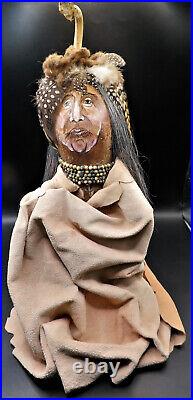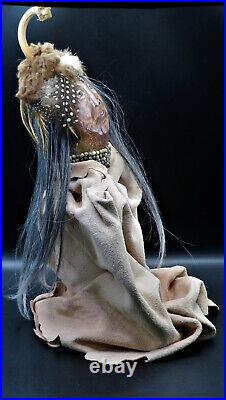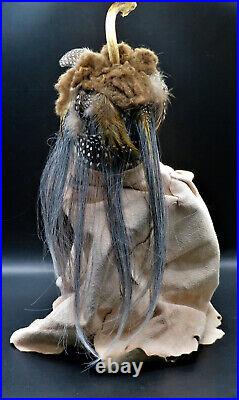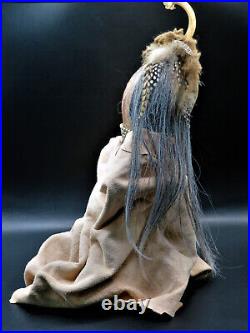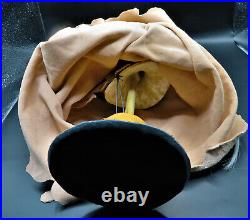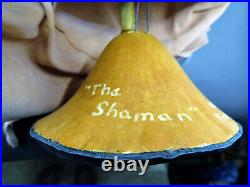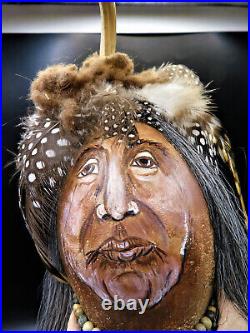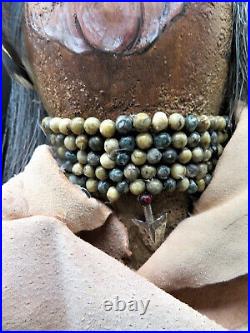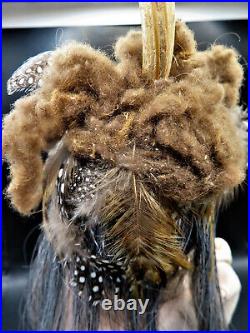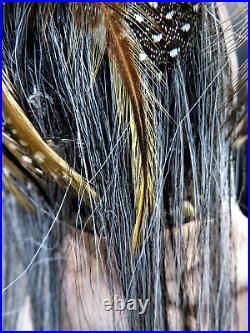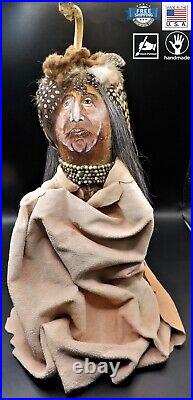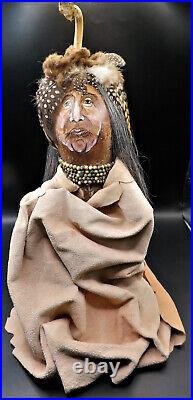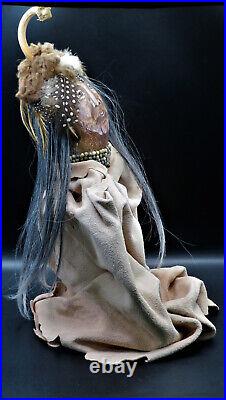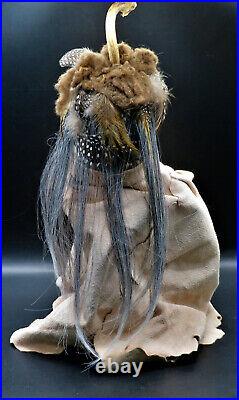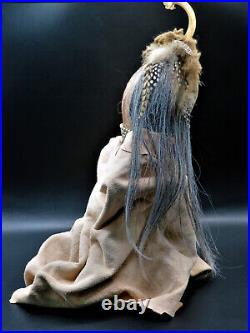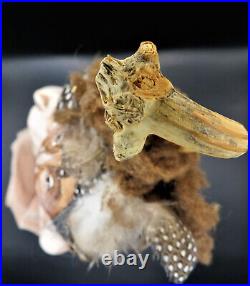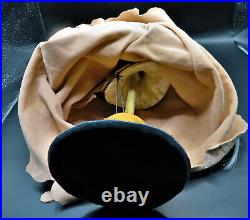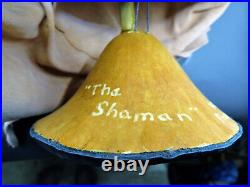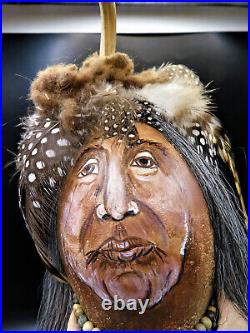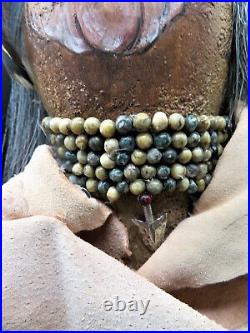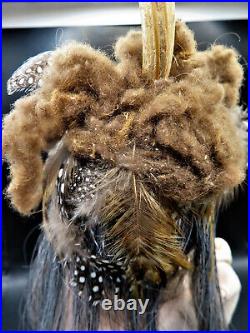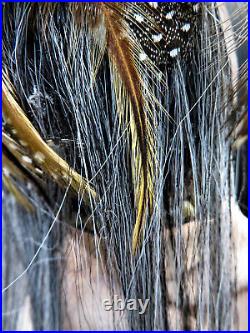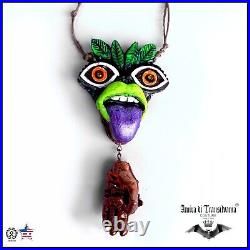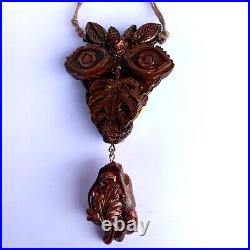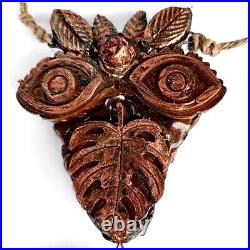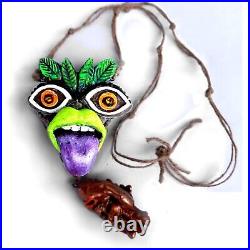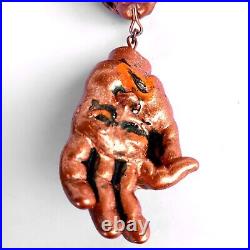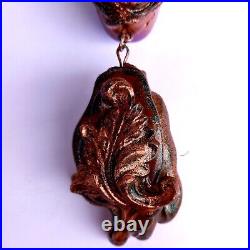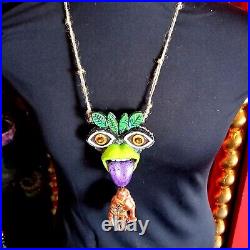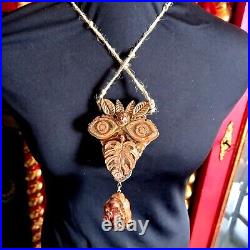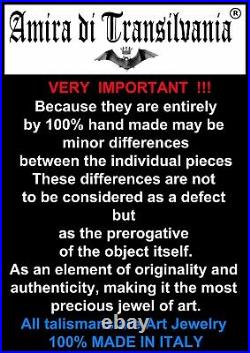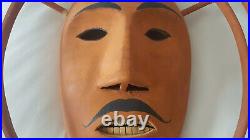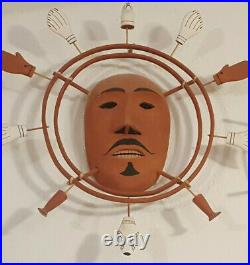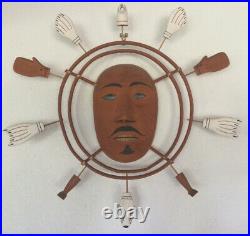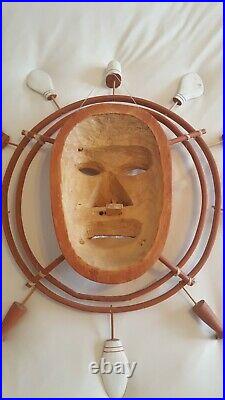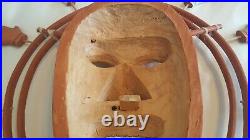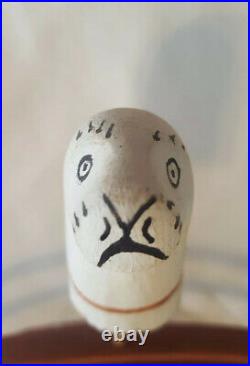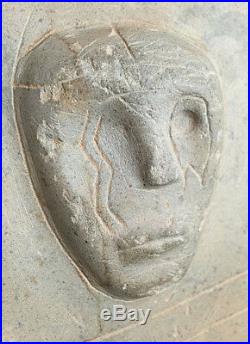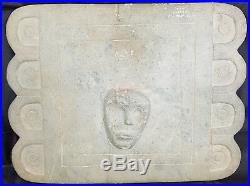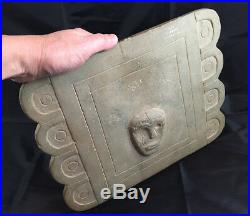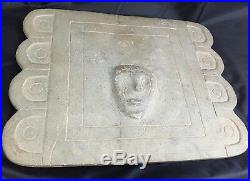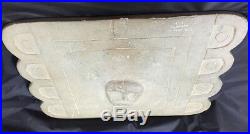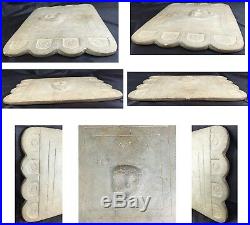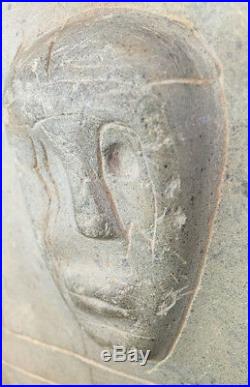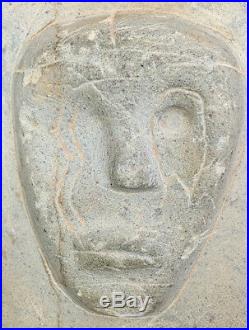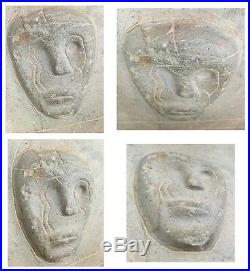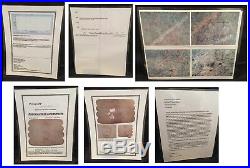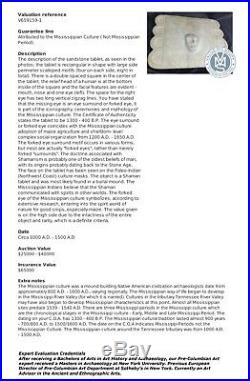
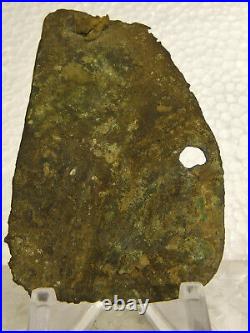
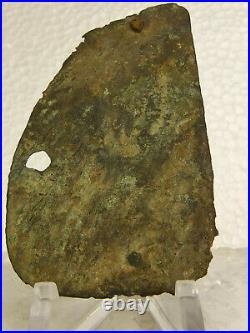
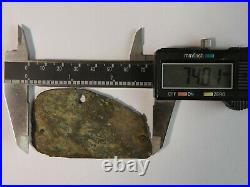
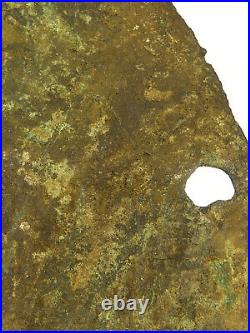

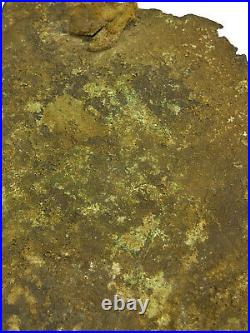
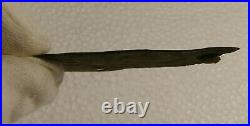

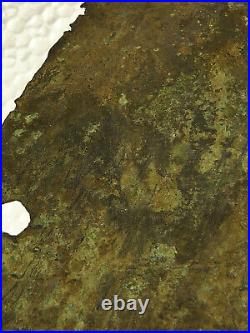
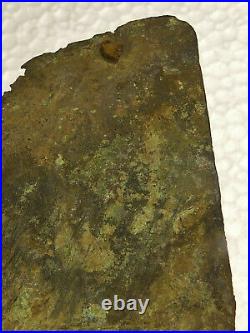



Ancient Art, Antiques & Fine. Ancient Native American Shaman’s Copper Gorget. Estimated 35+ Images of Shaman Transformation Figures. I certify that this Ancient Copper Gorget was legally collected on private land with the owner’s permission prior to 1970 and no Native American caves or mounds were disturbed. This is an opportunity to legally own a Shaman’s Native American Copper Gorget that is estimated to be about 1500 to 2,200 years-old. (also incorrectly called the “Hopewell Culture”) is the term used to describe common aspects of the Native American culture that flourished along rivers in the northeastern and Midwestern United States from 200 BC to 500 AD. The Hopewell tradition was not a single culture or society, but a widely dispersed set of related populations, which were connected by a common network of trade routes. Native American Shaman’s Copper Gorget with at least 35+ Transformation Images, including. Shaman, Spirits, Hands, Animals, Birds, Insects, & Spirit Animals. Material: Copper hammered into a thin sheet, painted, and then punched with two suspension holes. Measurements: 2.93″ (74 mm) long x 1.69″ (43 mm) wide x. 04 (1.15 mm) thick. Very good period condition with no cleaning, repairs, or restorations, although the top edge appears to have broken off in antiquity. Exhibits signs of age such as surface wear, oxidation, lichen growth, and weathering. Original copper patina with leather knot still attached in one of the suspension holes. This piece came from a large, private collection of Native American artifacts in Pennsylvania, including Iroquois effigy clubs, Anasazi pottery, Mississippian, and Hopewell artifacts. Although the exact significance of the human, animal, and insect images, which had been painted on about 1,500 to 2,000 years-ago on both sides of this gorget pendant is unknown, it appears that it was owned by a shaman who was able to communicate with the Spirit World by transforming himself into an animal spirit. Both sides of the gorget have painted images that can still be faintly viewed, especially under magnification. On the obverse side of this gorget (with the side hole facing right), there appears to be at least eight (8) pictographs that were painted on to the once bright copper surface and are now covered over with lichen and copper oxidation, but they include. {See photos # 1, 4-6}. A standing Shaman man with legs separated and with his arms upraised to the Sun God. He appears to be wearing a feathered headdress, which was common for Shaman-see additional details in the Shaman section below. Underneath the Shaman on the lower right side, is a pair of raised hands with fingers. The hand was a symbol of possession or ownership, and in this case may represent spiritual ownership, perhaps signifying the Shaman’s close bond with his Spirit animal. Directly across from the Shaman, there appears to be an insect, possibly a cicada or a butterfly-you can see its tiny front legs and wings next to its elongated body. Above the butterfly or cicada? , there appears to be a small frog with 4 legs. And on the very top of this side, there appear to be 3 small pictographs positioned in a horizontal line that measures about 19 mm in length, but that I was unable to see clearly enough to identify the images. On the reverse side of this gorget (shown with the side hole facing left), one can see at least six (25) painted figures of. {See photos # 2, 8-12}. A seated Shaman with his arms raised and in transformation pose with his Spirit animals. He is depicted with a characteristic top-knot hairstyle–a distinguishing feature of Shamans throughout the Southeast, Woodlands, and even in the Great Plains. On this image of a Shaman, one can see his/her braided hair hanging from their shoulders to the ground. This painted figure appears to be in a state of altered consciousness as you can see a tiny stick figure of a human Spirit being carried to the skies by a string of perhaps 10 tiny birds as they transform the Shaman for his astral, out-of-body journey. There are a number of images coming from the mouth of the Shaman that appear to be two small animals (the largest is just 6 mm long) that could the Shaman’s Spirit Animals or his singing to contact them. An effigy of what appears to be another Spirit Animal that is painted below the Shaman. Across from the Shaman on the left side, there appears to be a large bird with its wings spread 23 mm, likely a majestic eagle, and from the size likely the Shaman’s primary Spirit Animal. {See photo # 8}. Above the Eagle, is another figure that appears to be a four-legged animal. On the lower right side, there are perhaps 19+ very tiny images of people or Spirit Ancestors? , a pot, raised hands, etc. These pictographic images are ridiculously small and had to be painted with a brush made from just a few strands of animal fur. Each shaman was believed to carry within him a number of animal spirits that directed and guided his judgements-oftentimes represented by a lizard, snake, animals, or birds. Decisions were made on the basis of advice supposedly received from such supernatural animal helpers. When a shaman has an out-of-body transformation into an animal or bird, these beings are not actual creatures, but spirits that take the form of the animal representing the need of the individual. Hopewell culture, notable ancient Indian culture of the east-central area of North America. It flourished from about 200 BC to 500 AD chiefly in what is now southern Ohio, with related groups in Michigan, Wisconsin, Indiana, Illinois, Iowa, Kansas, Pennsylvania, and New York. The name is derived from the Hopewell farm in Ross county, Ohio, where the first site that explored a group of burial mounds with extensive enclosures of banked earth was examined. The term Mound Builders, once applied to this culture, is now considered a misnomer. Later investigations revealed that the practice of constructing earth mounds was widespread and served greatly differing purposes. Hopewell villages often laid along rivers and streams. The inhabitants raised corn (maize) and possibly beans and squash, but still relied upon hunting and fishing and the gathering of wild nuts, fruits, seeds, and roots. The amount of pottery and ornamental stonework and metalwork that has been found suggests some division of labor; moreover, the nature and size of the earthworks at many sites suggest that forms of public labor, whether voluntary or conscripted, may have been employed. The earthworks sometimes suggest defensive purposes, but more often they served as burial mounds or apparently formed the bases of temples or other structures. Their metalwork (consisting of beating and annealing) has been called the finest in pre-Columbian North America. Copper sheet was much used; although some silver and meteoric iron, and occasionally gold, entered into various ornaments and utility pieces. Sheets of mica also characterize the culture. Trade routes were evidently well developed, for material from as far away as the Rocky Mountains and the coasts of the Gulf of Mexico and the Atlantic Ocean are found in Hopewell sites, and articles identified as manufactured by the Hopewell Indians are found in localities as far distant. Shaman in the Hopewell Culture. Although the exact significance of the figures that decorate both sides of this gorget pendant is unknown, it appears that it was owned by a shaman who was able to communicate with the Spirit World by transforming himself into an animal spirit. Each shaman was believed to carry within him a number of animal spirits that directed and guided his judgements-oftentimes represented by a lizard or snakes. On the obverse side of this gorget, one can see the painted figure of a kneeling Shaman with his characteristic top-knot hairstyle–a distinguishing feature of shamans throughout the Southeast, Woodlands, and even in the Great Plains. An effigy of his patron-spirit animal was painted on the obverse side of this copper gorget. This painted figure appears to be in a state of altered consciousness as they transform into a spirit animal on their astral, out-of-body journey. Shaman controlled the reins of power overtly exercised by the Chief. Everyone, including the Great Sun Chief himself, was subject to their ultimate authority, and it was through them that punishment was demanded for the breach of any rules of behavior on ritual occasions, since it was to the Spirit World with which the shamans were in communication that people had to atone for deviations affecting the community, clan, and the individual. Shaman were able to communicate directly with the animal-spirits of the supernatural world. In Southeast native beliefs, the frog or toad was the bringer of rain as well as being a powerful shaman figure. This gorget was probably used by a shaman during rituals that were intended to appeal to the spirits of rain and thunder. Birds of prey feature prominently in Hopewell shamanic belief, since they are swift, courageous, noiseless, and deadly efficient. Shaman wore elaborate headdresses that almost always included feathers in recognition of the desirable qualities possessed by birds and as an expression of the shaman’s ability to transform himself into out-of-body travel and fly into the spirit world. Head coverings were deemed essential, as this part of the body was thought to be the exit and entry point for the soul. Shamanism in North America. Hint, Firefly Books, 2003. Each object I sell is professionally researched and compared with similar objects in the collections of the finest museums in the world. When in doubt, I have worked with dozens of subject matter experts to determine the condition and authenticity of numerous antiquities and antiques. All sales are Final, unless I have seriously misrepresented this item! Please look at the 4x macro photos carefully as they are part of the description. Member of the Authentic Artifact Collectors Association (AACA) & the Archaeological Institute of America (AIA). This item is in the category “Collectibles\Cultures & Ethnicities\Native American: US\Pre-1600\Artifacts”. The seller is “houghton-usa” and is located in this country: US. This item can be shipped to United States, Canada.
- Handmade: Yes
- Modified Item: No
- Country/Region of Manufacture: United States
- Culture: Native American: US
- Provenance: Ownership History Available
- Origin: Hopewell Culture
- Tribal Affiliation: Hopewell
- Featured Refinements: Gorget
- Material: Copper
- Est. Date: 200 BC–500 AD












